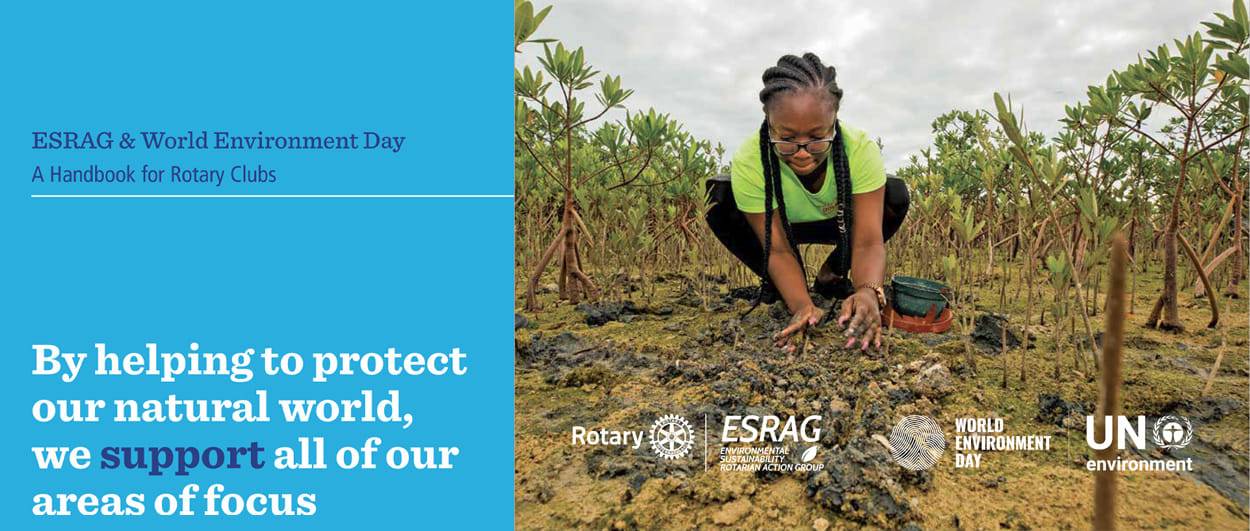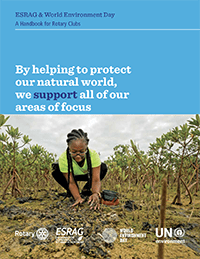ESRAG & UNEP Handbook

ESRAG & UNEP Handbook
This handbook has been created by the Environmental Sustainability Rotarian Action Group (ESRAG) with input from UN Environment. Its purpose is to educate and inspire Rotarians around the world to take action for the environment, and to bring attention to the important role the environment plays in Rotary’s seven areas of focus. The handbook includes a selection of 11 green themes for activities that Rotary clubs can do for World Environment Day on 5 June or make a commitment to commence an activity in the future.
The content of the Handbook is the product of an extended collaboration with Daniel Cooney, a former Rotary Peace Fellow and other members of the Communications staff of UN Environment, headquartered in Nairobi, Kenya, and members of ESRAG’s Division leadership team. Christopher Puttock, ESRAG’s Chair-Elect aided by Pat Armstrong, Director of Membership; Rachael Blair, our on-the-ground liaison in Kenya; Karen Kendrick-Hands, Director of Communications and Rick Randolph, Director of Projects. Larry Hands, Director of IT, assisted in collecting and polishing some of the images.
UN Environment: Rotarians Vital to Climate Solutions
With pollution and climate change wreaking economic havoc, causing more than 7 million premature deaths a year, and fueling the refugee crisis, “we are doing a poor job for our planet and our peoples’ health as we pursue economic development,” warned Dr. Hartwig Kremer, Head of UN Environment’s Global Environment Monitoring Unit, in a speech to ESRAG members in Hamburg. But because we are “in touch with local communities, professionals, and business leaders worldwide,” he added, Rotarians can catalyze solutions.
The UN provides the framework and tracks global progress: “In September 2015, with the backing of 193 world leaders, 17 Sustainable Development Goals were agreed to eradicate extreme poverty and achieve a healthy, sustainable world by the year 2030—the 2030 Agenda for Sustainable Development,” Kremer said.
“Agenda 2030 is a magnificent achievement,” he added. “Now what we need to do is figure out what that means at the local level. It’s important that we demonstrate stewardship and show success. UN Environment and Rotary can deliver that by collaborating at scale with a focus on the people.”
Kremer praised District 9212’s Adopt a River initiative in East Africa, led by District Governor Joe Otin, as proof of Rotary’s power to mobilize communities to protect the resources essential to life and livelihood. This is just one of the Action Steps he highlighted from the World Environment Day Handbook for Rotary Clubs released jointly by ESRAG and UN Environment in June. Monitoring air quality, planting trees, helping communities go solar, and beating plastic pollution are other key strategies.


